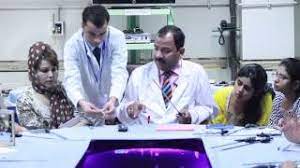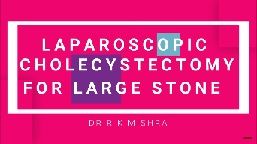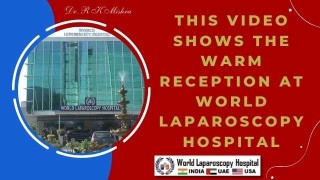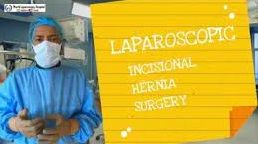Laparoscopic and Hysteroscopic Management: Effective Treatment for Asherman Syndrome
Add to
Share
1,457 views
Report
2 years ago
Description
Asherman Syndrome, also known as intrauterine adhesions or uterine synechiae, is a condition characterized by the formation of scar tissue within the uterine cavity. This condition can lead to a range of complications, including menstrual abnormalities, infertility, and recurrent pregnancy loss. Fortunately, advancements in medical technology have led to effective treatment options, namely laparoscopic and hysteroscopic management, that offer hope to individuals affected by Asherman Syndrome. Laparoscopic and hysteroscopic management refers to the combined approach of using minimally invasive surgical techniques to diagnose and treat Asherman Syndrome. These procedures involve the use of specialized instruments and a camera to visualize and access the uterine cavity, allowing for targeted intervention and restoration of normal uterine function. The laparoscopic component of the management involves the insertion of a laparoscope through small incisions in the abdomen, providing a magnified view of the pelvic organs. This allows the surgeon to identify any anatomical abnormalities, such as intrauterine adhesions or scar tissue, which may contribute to Asherman Syndrome. In some cases, laparoscopic techniques may be used to address underlying factors, such as removing fibroids or correcting uterine abnormalities that contribute to the condition. The hysteroscopic component involves the insertion of a hysteroscope, a thin, flexible tube with a camera and light source, through the cervix and into the uterine cavity. This allows direct visualization of the scar tissue and adhesions within the uterus. Specialized instruments are then used to meticulously remove or disrupt the adhesions, creating a healthy environment for the uterine lining to regenerate. The combined laparoscopic and hysteroscopic approach offers several advantages for the management of Asherman Syndrome. Firstly, it allows for precise visualization and targeted treatment of the scar tissue, ensuring a thorough removal of adhesions and restoration of normal uterine anatomy. Additionally, the minimally invasive nature of these procedures results in smaller incisions, reduced postoperative pain, faster recovery, and improved cosmetic outcomes compared to traditional open surgery. Following the laparoscopic and hysteroscopic management, patients may undergo hormonal therapy or use intrauterine devices to help prevent the reformation of scar tissue and promote healing of the uterine lining. Close follow-up and monitoring are essential to assess the success of the treatment and address any ongoing concerns related to fertility or menstrual function. It is important to note that while laparoscopic and hysteroscopic management has shown promising results in the treatment of Asherman Syndrome, it may not be suitable for all cases. The severity and extent of adhesions, as well as individual patient factors, will guide the treatment plan. Therefore, it is crucial for individuals affected by Asherman Syndrome to consult with a reproductive specialist or a gynecologic surgeon experienced in these techniques to determine the most appropriate course of action. Asherman Syndrome, also known as intrauterine adhesions or uterine synechiae, is a condition characterized by the presence of scar tissue within the uterine cavity. This can lead to various complications, including menstrual abnormalities, infertility, and recurrent pregnancy loss. However, with the advancements in medical technology, laparoscopic and hysteroscopic management has emerged as an effective treatment approach for individuals affected by Asherman Syndrome. Laparoscopic and hysteroscopic management involves the use of minimally invasive surgical techniques to diagnose and treat Asherman Syndrome. These procedures offer several benefits over traditional open surgery, including smaller incisions, reduced postoperative pain, faster recovery, and improved cosmetic outcomes. The management of Asherman Syndrome typically begins with a comprehensive evaluation of the patient's medical history and symptoms. Diagnostic procedures, such as hysterosalpingography or hysteroscopy, may be performed to assess the extent and severity of intrauterine adhesions. Once the diagnosis is confirmed, the laparoscopic and hysteroscopic approach can be employed. The laparoscopic component of the management involves the insertion of a laparoscope, a thin, lighted tube with a camera, through small incisions in the abdomen. This allows the surgeon to visualize the pelvic organs, identify any underlying conditions contributing to Asherman Syndrome, and guide subsequent treatment decisions. If necessary, additional laparoscopic procedures can be performed to address associated factors, such as removing fibroids, correcting uterine abnormalities, or addressing endometriosis. The hysteroscopic component involves the insertion of a hysteroscope, a slender instrument with a camera and light source, through the cervix and into the uterine cavity. This enables direct visualization of the scar tissue and adhesions. Specialized hysteroscopic instruments are then used to carefully remove or disrupt the adhesions, restoring the normal architecture of the uterine cavity. The laparoscopic and hysteroscopic management of Asherman Syndrome offers several advantages. It allows for precise visualization of the scar tissue, targeted treatment of the adhesions, and the restoration of normal uterine anatomy. The minimally invasive nature of these procedures also reduces the risk of complications, shortens the hospital stay, and promotes a faster recovery. Following the laparoscopic and hysteroscopic intervention, additional measures may be taken to enhance the healing process. Hormonal therapy, such as estrogen supplementation, may be prescribed to promote the regeneration of the uterine lining. In some cases, intrauterine devices (IUDs) may be placed to prevent reformation of adhesions and maintain the separation of the uterine walls. Postoperative care and monitoring are crucial to evaluate the success of the treatment and address any ongoing concerns. Close follow-up with a reproductive specialist or a gynecologic surgeon experienced in managing Asherman Syndrome is essential. Regular examinations and imaging studies may be conducted to monitor the healing process, assess the restoration of uterine health, and discuss any fertility or reproductive concerns. It is important to note that the laparoscopic and hysteroscopic management of Asherman Syndrome may not be suitable for all cases. The severity and extent of adhesions, as well as individual patient factors, will guide the treatment plan. Therefore, a thorough evaluation and consultation with a specialist are necessary to determine the most appropriate approach for each individual. In conclusion, laparoscopic and hysteroscopic management has revolutionized the treatment of Asherman Syndrome by offering a minimally invasive and effective approach. These procedures provide healthcare professionals with the tools to visualize, diagnose, and treat intrauterine adhesions, restoring uterine health and improving fertility outcomes. By combining technical expertise, advanced technology, and individualized patient care, laparoscopic and hysteroscopic management offers hope and renewed reproductive possibilities for individuals affected by Asherman Syndrome.
Similar Videos






